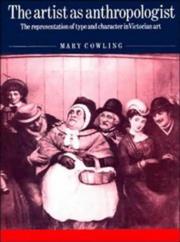| Listing 1 - 9 of 9 |
Sort by
|
Book
ISBN: 3111480917 3111114066 Year: 1904 Publisher: De Gruyter
Abstract | Keywords | Export | Availability | Bookmark
 Loading...
Loading...Choose an application
- Reference Manager
- EndNote
- RefWorks (Direct export to RefWorks)
To celebrate the 270th anniversary of the De Gruyter publishing house, the company is providing permanent open access to 270 selected treasures from the De Gruyter Book Archive. Titles will be made available to anyone, anywhere at any time that might be interested. The DGBA project seeks to digitize the entire backlist of titles published since 1749 to ensure that future generations have digital access to the high-quality primary sources that De Gruyter has published over the centuries.
Bildnis. --- Goethe, Johann Wolfgang von. --- Physiognomie. --- LITERARY CRITICISM / General.
Book
Abstract | Keywords | Export | Availability | Bookmark
 Loading...
Loading...Choose an application
- Reference Manager
- EndNote
- RefWorks (Direct export to RefWorks)
Bildnis. --- Bildnisgrafik. --- Fotografie. --- Kriegsgefangener --- Lithografie. --- Physiognomie --- Weltkrieg --- Struck, Hermann,
Book
Year: 1970 Publisher: Verviers Editions Gérard & Co
Abstract | Keywords | Export | Availability | Bookmark
 Loading...
Loading...Choose an application
- Reference Manager
- EndNote
- RefWorks (Direct export to RefWorks)
Biologie --- Sciences pures --- Zuivere wetenschappen --- Fysiognomiek --- Physiognomie --- 572.54
Book
ISBN: 2228888036 9782228888035 Year: 1994 Volume: 185 Publisher: Paris : Payot,
Abstract | Keywords | Export | Availability | Bookmark
 Loading...
Loading...Choose an application
- Reference Manager
- EndNote
- RefWorks (Direct export to RefWorks)
Facial expression --- Physiognomy --- Expression du visage --- Physiognomie --- History --- Histoire --- Physiognomonie --- Comportement humain --- Maitrise de soi
Book
ISBN: 9780691167497 0691167494 Year: 2017 Publisher: Princeton (N.J.) : Princeton University Press,
Abstract | Keywords | Export | Availability | Bookmark
 Loading...
Loading...Choose an application
- Reference Manager
- EndNote
- RefWorks (Direct export to RefWorks)
"We make up our minds about others after seeing their faces for a fraction of a second--and these snap judgments predict all kinds of important decisions. For example, politicians who simply look more competent are more likely to win elections. Yet the character judgments we make from faces are as inaccurate as they are irresistible; in most situations, we would guess more accurately if we ignored faces. So why do we put so much stock in these widely shared impressions? What is their purpose if they are completely unreliable? In this book, Alexander Todorov, one of the world's leading researchers on the subject, answers these questions as he tells the story of the modern science of first impressions. Drawing on psychology, cognitive science, neuroscience, computer science, and other fields, this accessible and richly illustrated book describes cutting-edge research and puts it in the context of the history of efforts to read personality from faces. Todorov describes how we have evolved the ability to read basic social signals and momentary emotional states from faces, using a network of brain regions dedicated to the processing of faces. Yet contrary to the nineteenth-century pseudoscience of physiognomy and even some of today's psychologists, faces don't provide us a map to the personalities of others. Rather, the impressions we draw from faces reveal a map of our own biases and stereotypes. A fascinating scientific account of first impressions, Face Value explains why we pay so much attention to faces, why they lead us astray, and what our judgments actually tell us."--
Face perception --- Social perception. --- Body image. --- Social psychology. --- Physiognomy. --- Physical Appearance, Body. --- Facial Recognition. --- Social Perception. --- PSYCHOLOGY --- Erster Eindruck. --- Gesicht. --- Interpretation. --- Kognition. --- Physiognomie. --- Wahrnehmung. --- Persönlichkeit. --- Psychological aspects. --- Social Psychology. --- Personality. --- Cognitive Psychology. --- Social perception --- Body Image --- Social psychology
Book
ISBN: 2889280934 2735128784 2735128695 Year: 2022 Publisher: Paris Éditions de la Maison des sciences de l’homme
Abstract | Keywords | Export | Availability | Bookmark
 Loading...
Loading...Choose an application
- Reference Manager
- EndNote
- RefWorks (Direct export to RefWorks)
Le portrait est sans conteste le genre artistique le plus fécond du début des Temps modernes. Dans la France du XVIIe siècle, qui se distingue par une mobilité sociale inconnue jusqu’alors, le portrait permet précisément d’appuyer la revendication d’un nouveau statut social ou d’assurer un rang acquis, mais désormais remis en question. Le portrait se fait également l’écho de la discussion capitale concernant le rapport entre le corps et l’âme. Pourtant, les sources écrites parvenues jusqu’à nous, qui s’intéressent au portrait, sont étonnamment parcimonieuses. L’Académie royale de peinture et de sculpture fondée en 1648, en particulier, est presque totalement muette à ce sujet. Et ce, bien que nombre de ses membres gagnent leur vie comme portraitistes et que le genre voie son importance s’accroître au cours du Grand Siècle : les portraits se multiplient, tandis que leur prix augmente constamment. Il semble que l’Académie ait sciemment passé sous silence le portrait et les débats afférents, afin de mieux célébrer comme sa véritable mission la peinture d’histoire, sur laquelle l’institution nous a laissé d’innombrables témoignages. La présente étude reconstitue les discours autour du portrait dans la France du XVIIe siècle et dévoile une discussion d’une vivacité surprenante, où d’aucuns se sont même demandé si le portrait ne méritait pas – plutôt que la peinture d’histoire – d’occuper la première place dans la hiérarchie des genres. Das Porträt ist sicherlich die fruchtbarste künstlerische Gattung der frühen Neuzeit. Gerade im Frankreich des 17. Jahrhunderts, das sich durch eine bis dahin unbekannte soziale Mobilität auszeichnete, erlaubte es das Porträt, den Anspruch auf eine neue gesellschaftliche Position zu unterstreichen bzw. auf einer überkommenen, nun aber in Frage gestellten Position zu beharren. Auch fand die zentrale Diskussion um das Verhältnis von Leib und Seele ihren Niederschlag im Porträt. Hiermit in Kontrast steht der Mangel an schriftlichen Quellen…
The arts --- Abbaye de Port-Royal --- Académie royale de peinture et de sculpture (fondée en 1648) --- genres artistiques --- Grand Siècle --- jansénisme --- monarchie française --- peinture d’histoire --- portrait --- physiognomie --- physiognomonie --- XVIIe siècle --- roi de France --- littérature
Book
ISBN: 9780567695499 0567695492 Year: 2020 Publisher: London : T & T Clark,
Abstract | Keywords | Export | Availability | Bookmark
 Loading...
Loading...Choose an application
- Reference Manager
- EndNote
- RefWorks (Direct export to RefWorks)
Callie Callon investigates how some early Christian authors utilized physiognomic thought as rhetorical strategy, particularly with respect to persuasion. Callon shows how this encompassed denigrating theological opponents and forging group boundardies (invective against heretics or defence of Christians), self-representation to demonstrate the moral superiority of early Christians to Greco-Roman outsiders, and the cultivation of collective self-identity. The work begins with an overview of how physiognomy was used in broader antiquity as a component of persuasion. Callon then examins how physiognomic thought was employed by early Christians and how physiognomic tropes were employed to "prove" their orthodoxy and moral superiority. Building on the conclusions of the earlier chapters, Callon then focuses on the representation of the physiognomies of early Christian martyrs, before addressing the problem of the acceptance or even promotion of the idea of a physically lacklustre Jesus by the same authors who otherwise utilize traditional physiognomic thought.
Christianity and culture --- Christianity and culture --- Christianity and culture --- Church history --- Church history --- Church history --- Evangelistic work --- Evangelistic work --- Evangelistic work --- Frühchristentum. --- Identitätsentwicklung. --- Körpererfahrung. --- Physiognomie. --- Physiognomy --- Physiognomy --- Physiognomy --- Physiognomy --- Early church. --- History --- History --- Primitive and early church. --- Early church. --- History --- History --- Biblical teaching. --- Biblical teaching. --- Religious aspects --- Christianity --- History of doctrines --- Religious aspects --- Christianity --- History of doctrines --- 30-600.

ISBN: 2869301502 9782869301504 Year: 1988 Volume: vol *5 Publisher: Paris ; Marseille : Rivages,
Abstract | Keywords | Export | Availability | Bookmark
 Loading...
Loading...Choose an application
- Reference Manager
- EndNote
- RefWorks (Direct export to RefWorks)
History of civilization --- Affective and dynamic functions --- anno 1500-1799 --- anno 1800-1899 --- Facial expression --- Physiognomy --- Expression du visage --- Physiognomie --- History --- Histoire --- Emotions --- Pathognomy --- Face reading --- Metoposcopy --- Characters and characteristics --- Psychology --- Face --- Phrenology --- Facial expressions --- Body language --- Expression --- Feelings --- Human emotions --- Passions --- Affect (Psychology) --- Affective neuroscience --- Apathy --- CDL --- 159.9 --- Facial expression - History --- Physiognomy - History --- SENS ET SENSATIONS --- PHYSIOGNOMONIE --- EXPRESSION --- EMOTIONS --- COMMUNICATION NON VERBALE --- LANGAGE DU CORPS

ISBN: 0521354900 Year: 1989 Publisher: Cambridge New York Sydney Cambridge University Press
Abstract | Keywords | Export | Availability | Bookmark
 Loading...
Loading...Choose an application
- Reference Manager
- EndNote
- RefWorks (Direct export to RefWorks)
Art [English ] --- Art anglais --- Classes sociales dans l'art --- Face in art --- Fysiognomie in de kunst --- Gezicht in de kunst --- Kunst [Engelse ] --- Physiognomie dans l'art --- Physiognomy in art --- Social classes in art --- Sociale klassen in de kunst --- Visage dans l'art --- Art, English --- English art --- Ancients (Group of artists) --- HobbypopMUSEUM (Group of artists) --- School of London (Group of artists) --- Shoreham Circle (Group of artists) --- Art, Victorian --- Victorian art --- Art, Modern --- Art [Victorian ] --- England
| Listing 1 - 9 of 9 |
Sort by
|

 Search
Search Feedback
Feedback About UniCat
About UniCat  Help
Help News
News